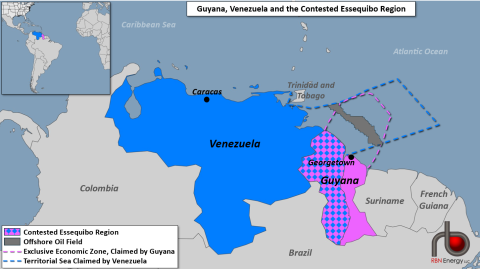Guyana’s rise as a crude oil producer in recent years can only be described as meteoric. If forecasts from some of the most respected international agencies pan out, the South American country’s output may soon rival some of the world’s biggest offshore producers. But the developments there are not without some controversy: they’re the centerpiece of a dispute over the proposed Chevron-Hess merger, while neighboring Venezuela claims that much of Guyana’s oil reserves are actually within Venezuelan territory. In today’s RBN blog, we’ll take a deep dive into Guyana’s production, examining its grades, quality and export flows as it transforms into a major global supplier.
Before we look at Guyana’s output, let’s take a step back and look at the global picture. Worldwide crude oil production averaged 82.8 MMb/d in 2023 and is expected to peak at 88.8 MMb/d in 2040 before tapering back to 88.5 MMb/d in 2045, according to the latest Future of Fuels report by RBN’s Refined Fuels Analytics (RFA) practice. On the demand side, the International Energy Agency (IEA) said in its July report that while weak demand and poor margins pressured Chinese and European crude processing earlier this year, global refining throughputs are expected to rise by 950 Mb/d in 2024 and another 630 Mb/d in 2025, reaching 84 MMb/d. Producer cartel OPEC, unsurprisingly, is more upbeat. They see demand growth at 2.25 MMb/d in 2024 and another 1.85 MMb/d in 2025.
With most of the OPEC+ alliance still engaged in their production-curtailment program, at least for now, there’s an opportunity for other producers to boost output. The IEA and the U.S. Energy Information Administration (EIA) have identified tiny, sparsely populated Guyana — with about 83,000 square miles and 820,000 people — as being one of the leading contributors to global supply growth over the next few years, along with three giants: the U.S., Canada and Brazil.
Figure 1. Guyana, Venezuela and the Contested Essequibo Region. Source: RBN
Join Backstage Pass to Read Full Article








